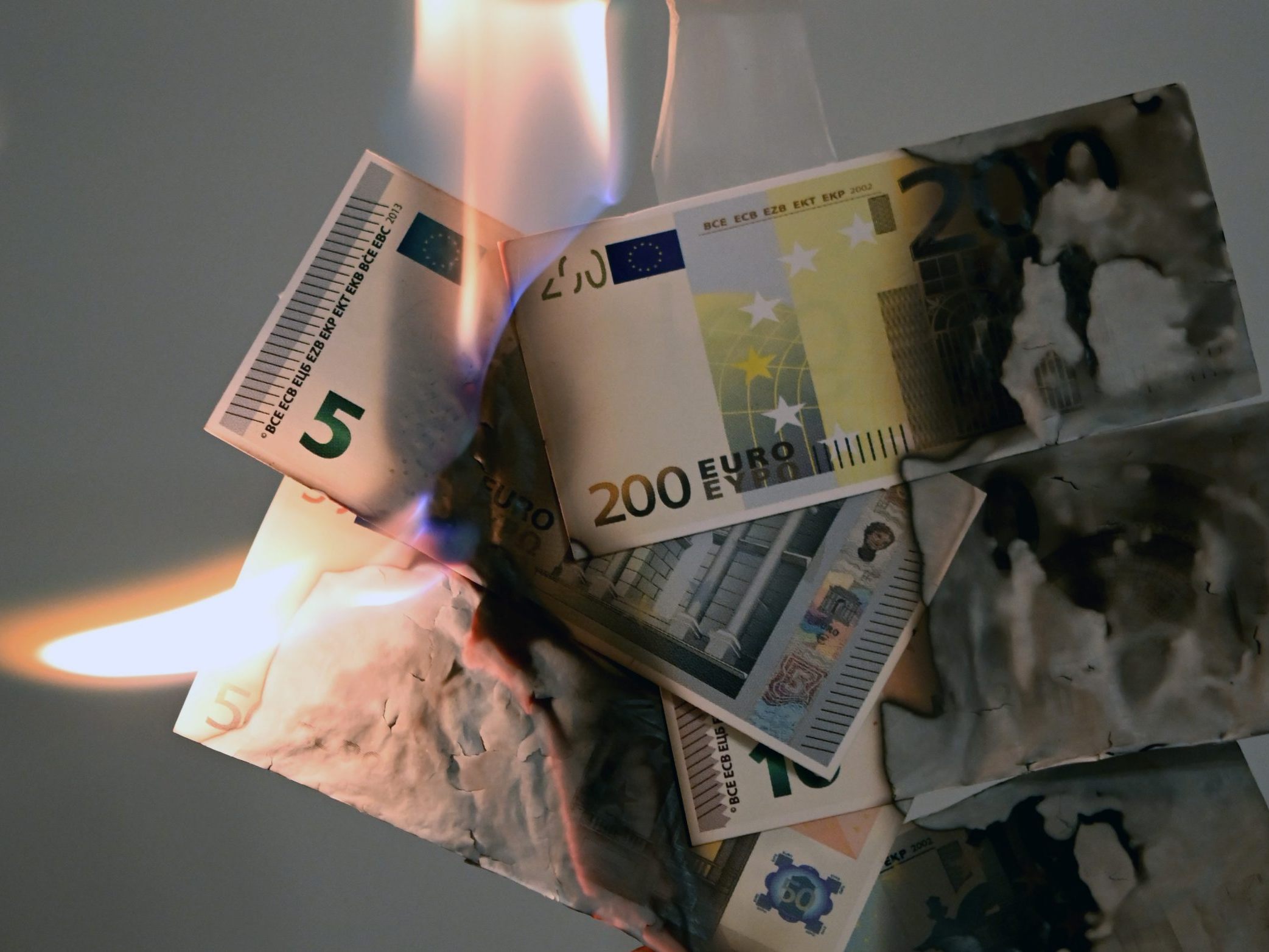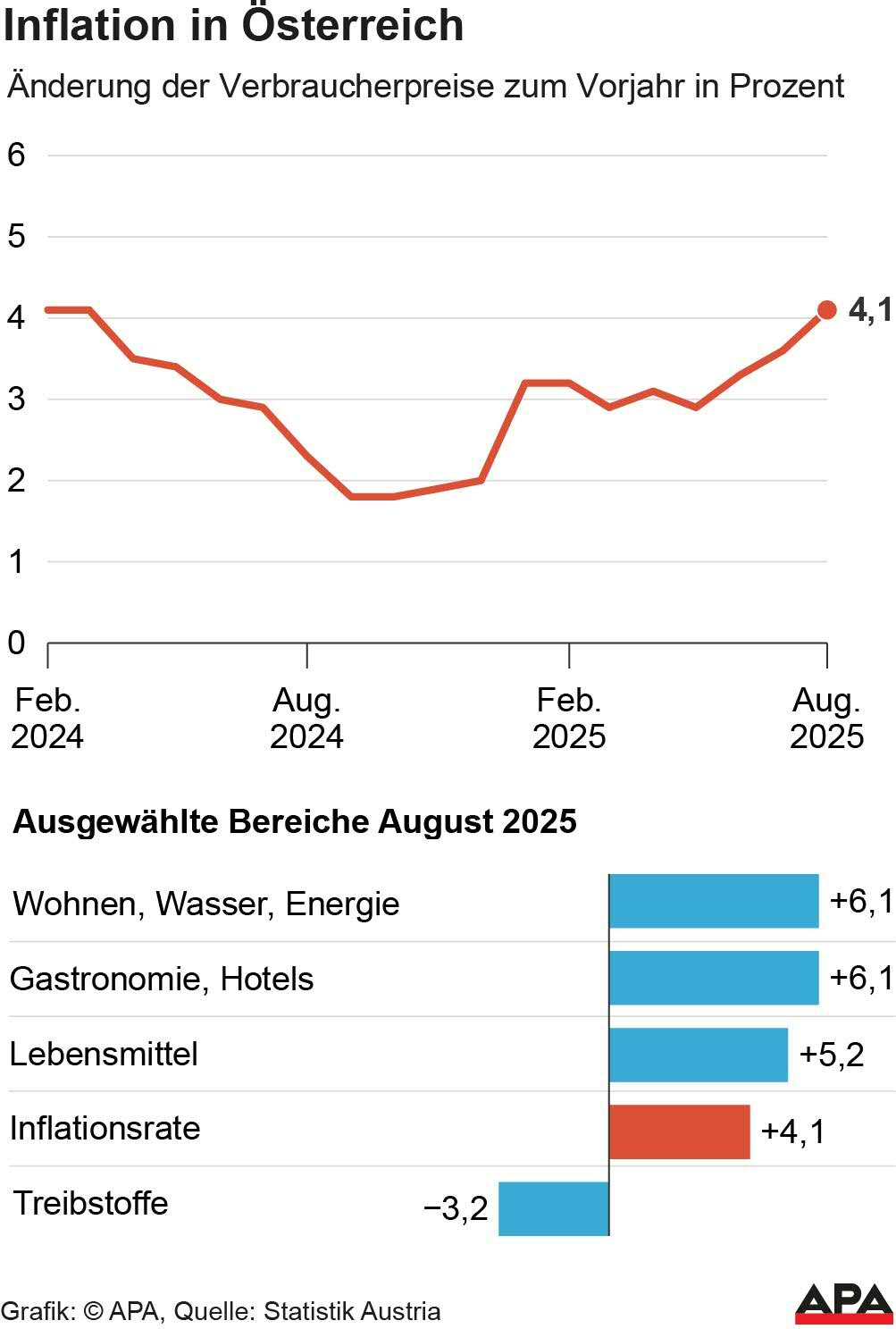4.1 Percent: Inflation in August at Annual High

According to Statistics Austria, inflation climbed to 4.1 percent in August, up from 3.6 percent in July. "The inflation rate was last this high in March 2024," confirmed Statistics Austria Director General Manuela Lenk on Wednesday, confirming the figures already expected in the flash estimate. "In many areas, the price surge intensified." The strongest price drivers currently are gastronomy, electricity, and food.
Without these three areas, the inflation rate would have been only 2.2 percent. Compared to July, the general price level increased by 0.2 percent.
Plus 37.2 Percent in Electricity
The housing, water, and energy sector had the largest share of inflation with an increase of 6.1 percent. The main reason was electricity prices, which increased by 37.2 percent over the year - an effect also attributed to the removal of the state electricity price brake as well as higher network charges and levies. District heating also became more expensive (+1.2 percent). However, prices for heating oil (-4.1 percent), solid fuels (-3.7 percent), and gas (-2.8 percent) continued to have a dampening effect. Rents also increased more strongly than in July, with +4.4 percent.

Prices in restaurants and hotels rose by 6.1 percent, stronger than in the previous month. While catering services increased particularly sharply with +6.1 percent, the price increase for accommodations slightly weakened to 5.6 percent. Food and non-alcoholic beverages became on average 5.2 percent more expensive. Price increases were particularly noticeable for meat (+6.2 percent) as well as for milk, cheese, and eggs (+7.5 percent). Bread and cereals cost 3.1 percent more, vegetables 2.4 percent more. Coffee became even 23.8 percent more expensive year-on-year.
Decrease in Fuels
In the transportation sector, an increase in prices was also observed: they rose by an average of 1.2 percent, after only +0.3 percent in July. Used cars became 7.1 percent more expensive, airline tickets by 3.6 percent. At the same time, the decline in fuel prices (-3.2 percent) had a less dampening effect than in the previous month. Clothing and shoes recorded an increase of 4.5 percent - an effect that Statistics Austria attributes to improved recording of seasonal patterns through scanner data.
Core Inflation, Micro and Mini Shopping Basket
Core inflation - excluding energy and unprocessed food - was 3.8 percent in August. The EU-wide comparable harmonized consumer price index (HICP) also reached 4.1 percent, an increase of 0.3 percent compared to July.
In everyday life, the inflation remained noticeable: The micro shopping basket, which reflects daily shopping, rose by 4.7 percent year-on-year. The mini shopping basket for weekly shopping, on the other hand, increased by only 3.4 percent.
The union-affiliated Momentum Institute believes that inflation could be pushed down to 0 percent by the end of the year. To achieve this, the value-added tax on all food should be reduced and political pressure should be exerted on food companies to halve the "Austria surcharge," recommends Momentum. Prices for rent and energy should be regulated.
(APA/Red)
This article has been automatically translated, read the original article here.





